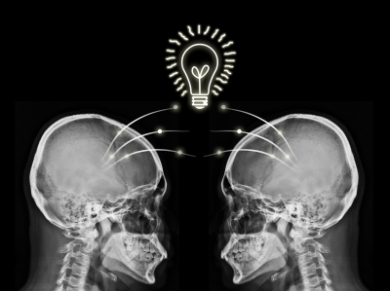Cross-Cultural Cognitive Science and the 5 Aggregates (the illusion of self)

What exactly creates the sense of a permanent self? Buddhists will tell you to turn to the 5 aggregates. Bridging the gap between traditional Buddhist teachings and modern neuroscience is a large hurdle that will obviously be instrumental in advancing the science of meditation. Part of that bridging includes examining the lexicon used in Buddhist texts and comparing that to our contemporary knowledge of consciousness. That being said, what does neuroscience and psychology have to say about aspects of Buddhist teachings? I read an article recently that examines, among several things, the correlates between cognitive science/western philosophy and the five aggregates (Rupa, Vedana, sañña, Samskara and Vijnana). I'll present here a very condensed version of what is discussed in the article in hopes of furthering some understanding for those who don't want to dedicate too much time in dissecting the article. If this interests you, I encourage you to read the article in the link to get a better understanding of what I have presented here.
The Five Aggregates:
1. Rupa
Rupa, the aggreagate of the body's matter or form, also refers to the body's "...mobility, temperature regulation, fluid, and digestive systems, as well as its processes of decay". Some may argue that emotion also plays a part in bodily reactions (ex. rising of blood in embarrassment) while emotional theorists obviously extend the definition of emotion as encompassing the feelings associated with them (pleasant feelings/unpleasant feelings/indifferent feelings).
2. Vedana
This latter aspect of "feeling" correlates with the second aggregate of vedana (feeling or sensation). Psychologists may refer to this aspect as "affective valence". Both the Buddhist and neuroscience perspective describe that vedana or affective valence can be present with or without conscious awareness and in more than just emotional mental states.
3. Sanna
The third aggregate, sanna, (or perception) is the aspect of consciousness that can identify, recall, and report experiences and correlates with what philosopher Ned Block calls “cognitive access". Cognitive access consists of "...having the content of an experience enter working memory so that one can identify and report on this content". Samannāhāra (or bringing together thoughts/stimuli) and manasikāra (or attention) are concepts helping to further refine this aggregate. It roughly corresponds to the alertness hypothesized to be dependent on the thalamus and brainstem (and not requiring selective attention).
4. Samkhara
The fourth aggregate, samkhara (mental formation or volition), can refer to cognitive processes that occurs when committing to a course of action, and the habitual routine that determines how we behave without our awareness. Samkhara corresponds to models of cognitive events such as "sensitive dependence on initial conditions". In other words, small changes in our mental conditions can greatly shift trajectories of thought because of "...self-forming processes arising from non-linear interactions between components at neural and motor levels".
5. Vinnana
Viññāṇa (or consciousness), the fifth and final aggregate can correlate with Block's, "phenomenal consciousness", which is defined as, "...as a moment of visual, auditory, tactile, olfactory, gustatory, or mental awareness". It can be described as "what it is like" to have an experience. For example, what is it like to see the colour red? I believe these types of mental phenomena are referred to as qualia.
Now that the aggregates have been outlined, how do we bring that all together? The article states it nicely so I'll leave the authors to summarize it best,
"This core or ground-floor level of consciousness depends on a basic kind of alerting function distinct from the higher-level mechanisms of selective attention that come into play in determining what one is conscious of. On this view, the fact that there is a phenomenal feel – the fact that there is something it is like for a subject – depends on the basic alerting function. In contrast, the content of phenomenal consciousness – what it is like for a subject – depends also on how this consciousness is directed to particular objects and properties through selective attention. Put another way, the particular contents of phenomenal consciousness can be seen as modifications or modulations of a basal level of awareness dependent on the alerting function (see also Searle 2000)."
http://www.vijja.net/media/Emmanuel_8772_c38_main.pdf (Link to main article) (Davis and Thompson)
Additional references mentioned in the above article:
Block, N. (2007). Consciousness, Accessibility, and the Mesh between Psychology and Neuroscience. In Behavioral and Brain Sciences 30, 481–548. doi: 10.1017/S0140525X07002786.
Block, N. (2008). Consciousness and Cognitive Access. In Proceedings of the Aristotelian Society 108(3), 289–317. doi: 10.1111/j.1467-9264.2008.00247.x.
Searle, John R. (2000). Consciousness. In Annual Review of Neuroscience 23, 557–78. doi: 10.1146/annurev.neuro.23.1.557.
